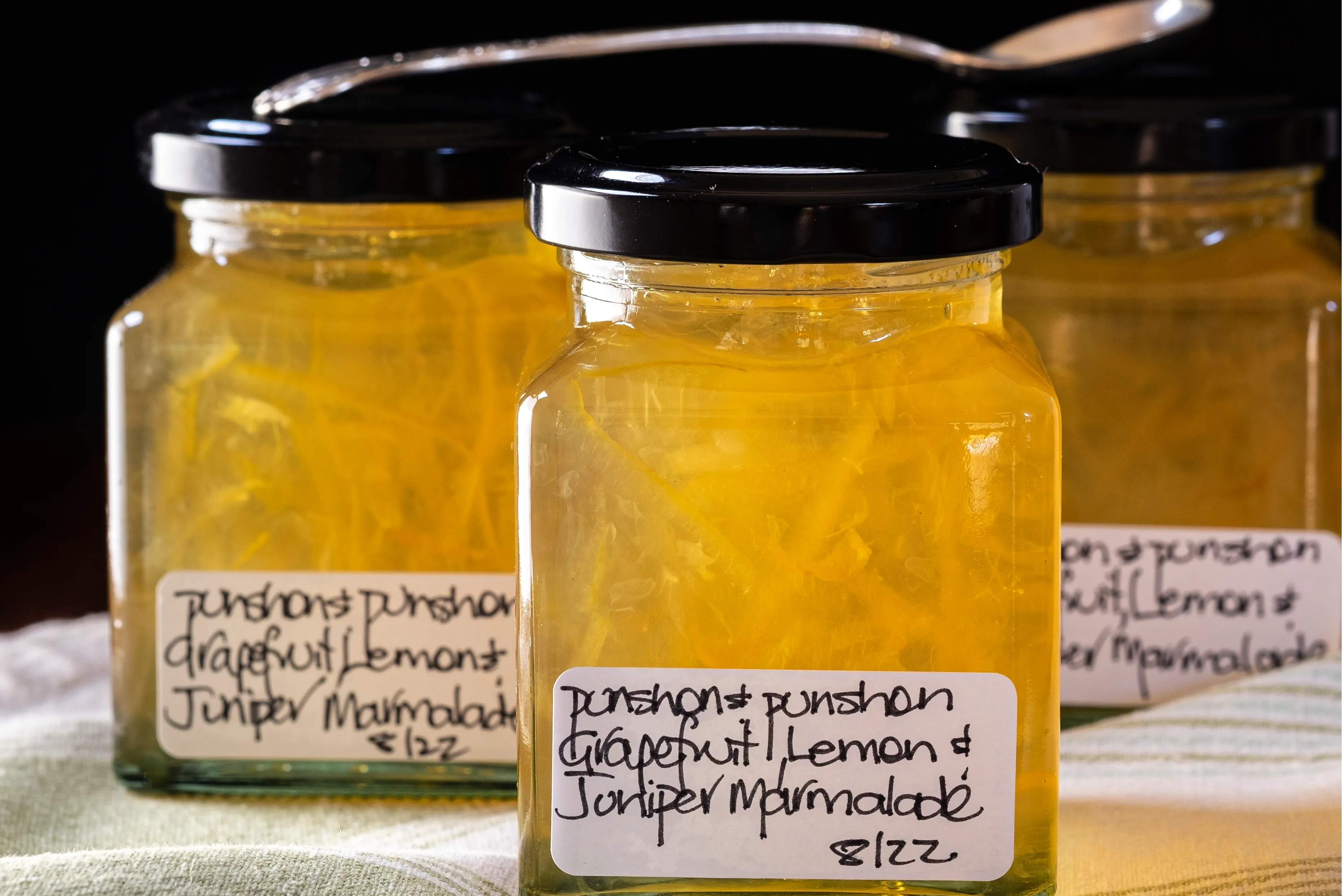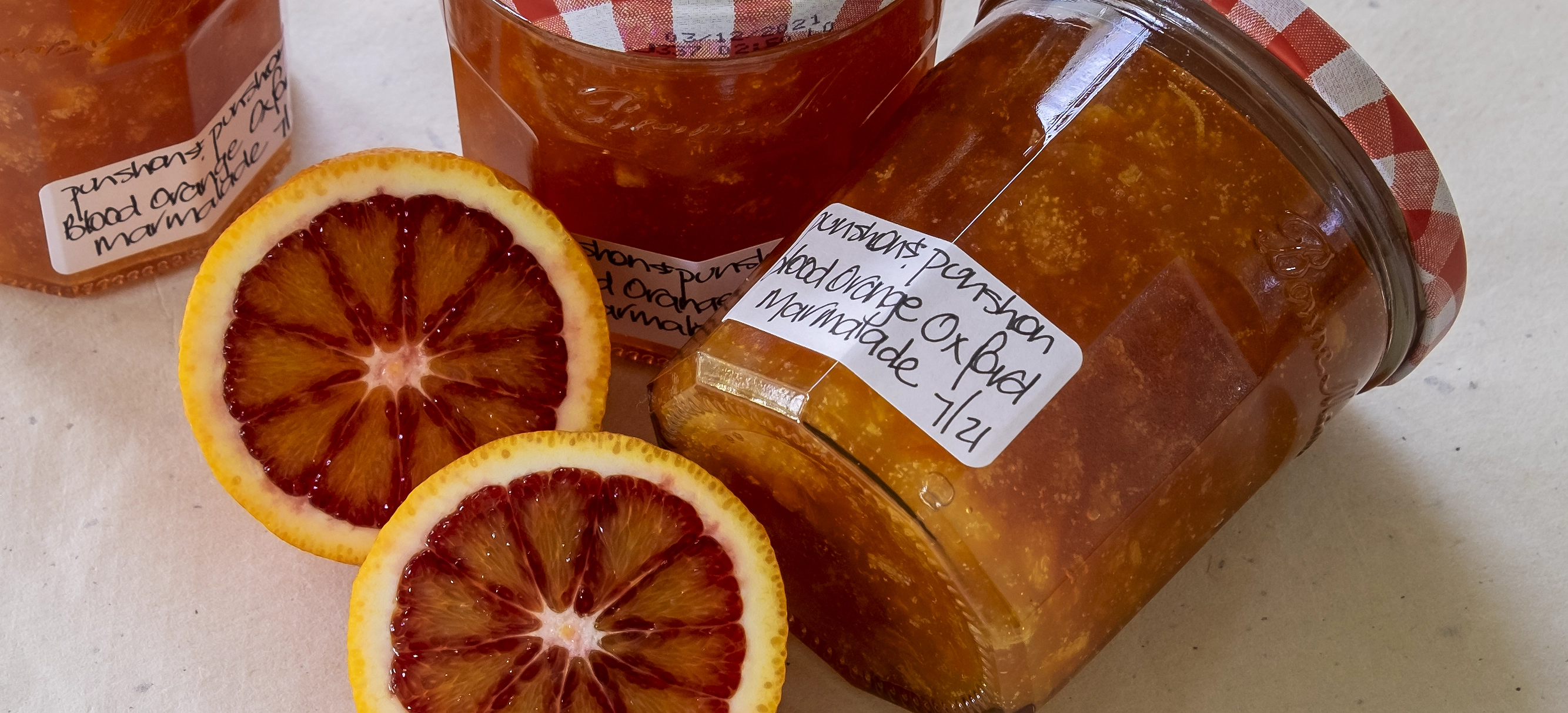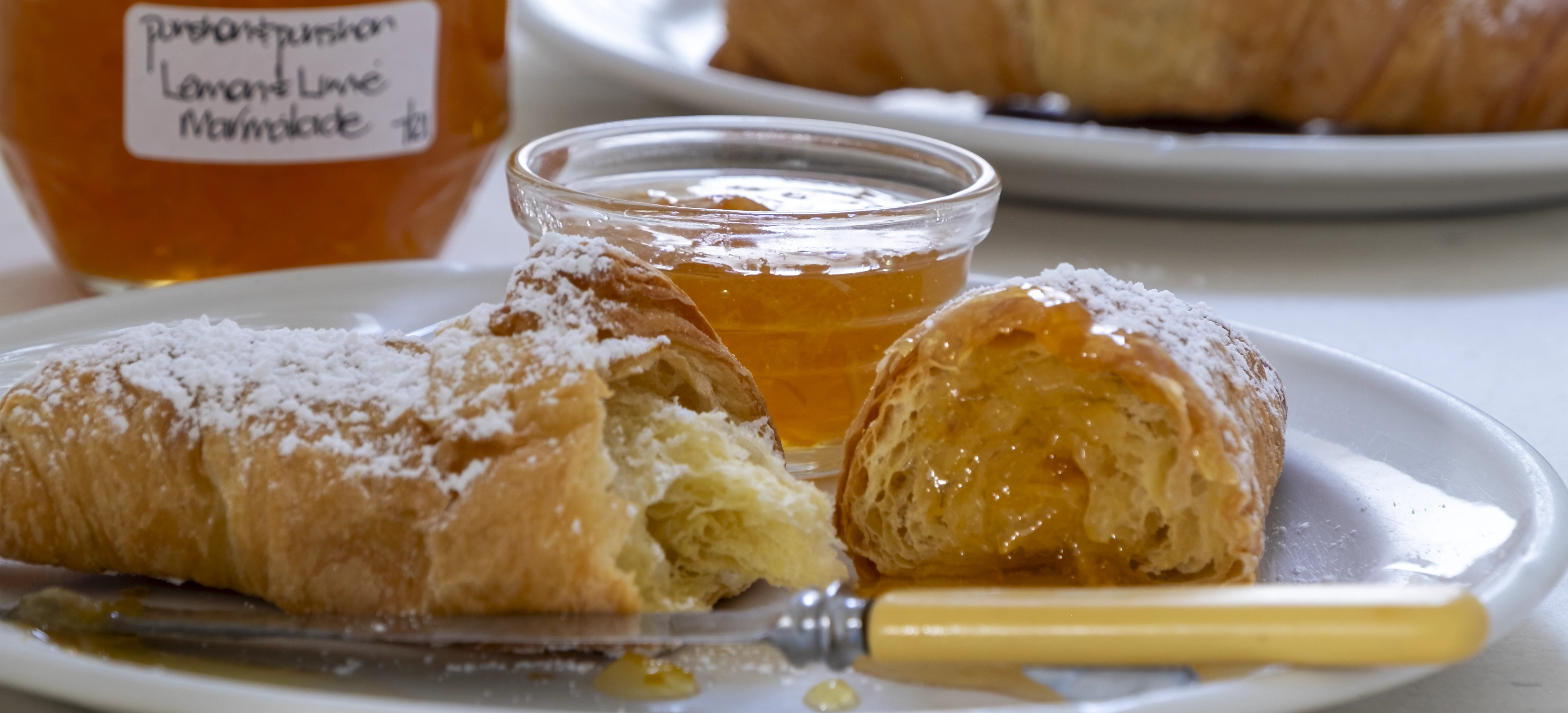
Marmalade Mistakes and Remedies
- Reasons
- Technique
Marmalade, made from citrus fruit with shredded peel suspended in a luscious sweet tangy jelly, is consumed across the world. Its journey through history is a fascinating story of culinary serendipity crossing geographic and cultural boundaries along the way. Today it’s consumed across the world primarily as a breakfast spread but once in the pantry, a spoonful or two adds citrus magic to sweet sauces, tarts, fruit cake and gingerbread. Lemons, limes, grapefruit, cumquats, and Seville oranges all make excellent marmalade either as a single flavour or as a combination. Sweet oranges, tangerines, and mandarins are better mixed with one of the sharper citrus varieties. Slightly different preparation and cooking techniques produces a fabulous range of marmalades from delicate jellies to darker, bitter kinds with soft chunky pieces of peel.
In our household, citrus season is marmalading time. The oven has an endless parade of bottles that need sterilising while the preserving pot is constantly on the boil. Once the marmalade technique is mastered you will be able to create an endless variety of your own creative combinations. My article on What makes Jams, Jellies and Marmalade Set and this overview of What Can Go Wrong are foundational reference tools to help you on your marmalading journey.

What Can Go Wrong
Failure to Set
- The right balance between acid, sugar and pectin is required to get the perfect set. Always use fresh citrus as it will contain a higher pectin level. Some marmalades such as, orange, tangerine, and grapefruit, require additional citric acid. Often these recipes will include fresh lemon, fresh lemon juice, or citric acid. If these are listed as ingredients in the recipes, do not leave out.
- If you are reducing the sugar content of a recipe, be aware that this may reduce the set. If it does not reach the right setting point after a rigorous boiling, add a small amount of sugar and the juice of half a lemon.
- If the boiling time has been misjudged and the marmalade is runny when cold, it can be re-boiled. Return all the marmalade back to the preserving pan and re-boil until you have a confirmed set. Finish as before.
Poor Colour and Flavour
- Prolonged boiling after the sugar has been added can spoil the flavour and colour.
- Ensure the contents of the pan have reduced sufficiently before adding the warmed sugar. This dissolves more quickly which will reduce the boiling time and help to retain the colour and flavour.
Mould Develops
- A mold can develop on top of the marmalade if the jars and/or lids were not warm and dry when potting up. If the lids are not sealed tightly during storage, air, and airborne microbes can enter the jar.
- Hot marmalade should always be ladled into hot dry jars and sealed with hot dry lids immediately after the jars are filled. As the marmalade cools in the sealed jar a vacuum will be created which will create a secure seal. During the cooling process you may hear the lids make a ‘pop’ sound. This indicates a vacuum seal has been created.
Tough Peel
- Long slow simmering is required to cook the peel to a soft consistency. To check if the peel is cooked, squeeze a piece between your thumb and second finger, it should mush easily. If it is undercooked and the sugar is added, boiling the mixture will toughen the peel. This is not pleasant to eat, and competition entries will be marked down for this. The slow cooking also extracts the pectin and ensures a good reduction of the excess liquid.
Fruit Discolouration
- This can occur if the fruit is sliced with a carbon steel knife. Also, a marmalade may darken over time if it is not sealed tightly or if it is not stored in a cool, dry pantry or cupboard with reduced light.
Crystallisation
- Crystallisation may occur during the storage process if too much sugar has been added or if the sugar is not completely dissolved before the boiling stage.
Floating Bubbles and Rising Peel
- If the mixture is cooled too much, bubbles can form while filling the jar and these will be trapped through the marmalade. If the jar is overheated during the sterilisation stage and filled with the cooled marmalade, it can bubble in the jar. Use a funnel and allow the marmalade to glide down the side of the funnel, so air bubbles are not formed
- Peel will rise as it sets in the jar if it hasn’t had sufficient time for the marmalade to begin to gel to support the shreds. After the setting point has been reached, remove the marmalade off the stove and place on a heat resistant board or rack. Allow to cool until a skin begins to form. Then gently stir the marmalade to redistribute the peel. Use a funnel and allow the marmalade to glide down the side of the funnel, so air bubbles are not formed.
Jars Crack
- Jars can crack during the sterilisation and/or filling stage.
- The temperature differential between hot jars and a cold hard surface can cause jars to crack.
- Use good quality glass jars. Place hot dry sterilised jars on a heat resistant surface while filling.
Marmalade Shrinks
- If jars are not filled correctly, it can cause shrinkage while it cools. This can also encourage bacteria growth. Jars should be filled to 2.5 cm or 1 inch from the top of the jar.

Happy Marmalading
